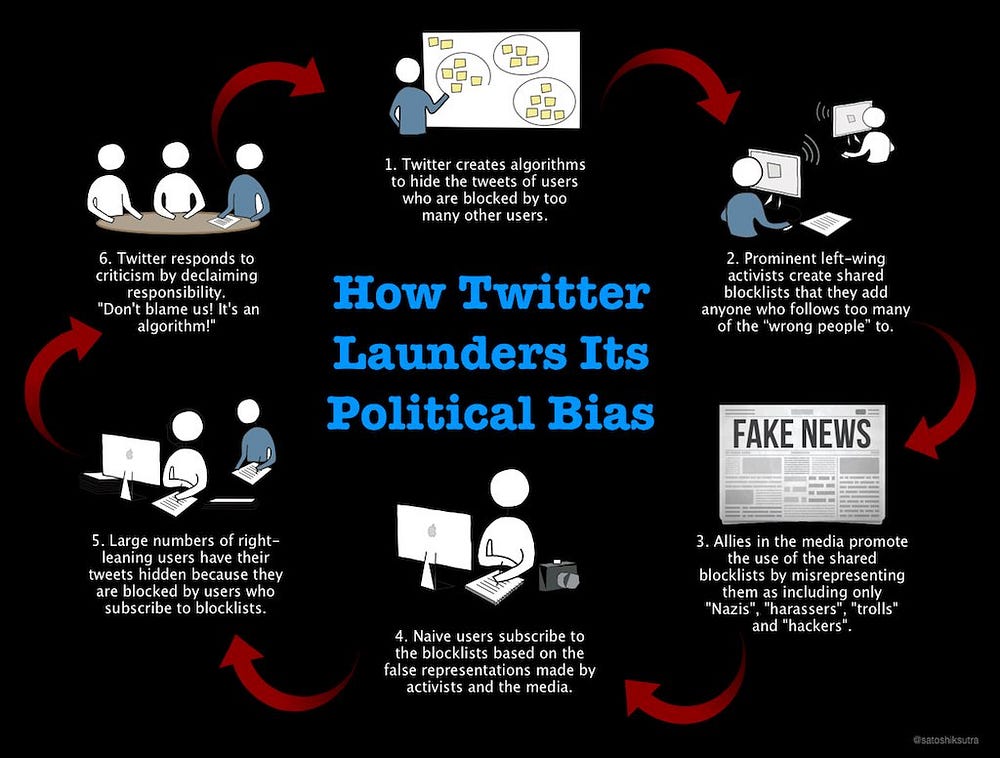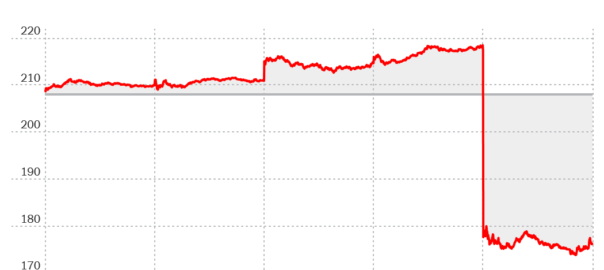By Kent R. Kroeger (July 30, 2018)
Combined, the roughly 20 percent drop in Facebook and Twitter stock prices on Friday wiped out about $120 billion in shareholder value.
Coincidently, on the same day Facebook and Twitter shareholders took a giant hit to their net worth, the U.S. Bureau of Economic Analysis announced the U.S economy (as measured by GDP) grew 4.1 percent last quarter.
“The Republicans giveth and the Democrats taketh away,” piped a radio host on an afternoon talk show here in Philadelphia.
To give the Republicans total credit for the current strength of the U.S. economy may be an over-simplification of how the economy works, but there may be some merit to the claim.
But to imply the Democrats are responsible for Facebook and Twitter losing between 15 and 20 percent of their stock value? That assertion strains even my credulity.
Still, let us give both assertions a spin.
Is the Trump administration responsible for current economic growth?
To the extent any president can alter the direction of the economy in the short-term, Trump has probably done as much as any past president during peacetime.
The Trump tax cut (which largely went to corporations and the wealthiest Americans). A surge in defense spending. A rollback in some environmental regulations, and on-going attempts to repeal others.
All potentially impactful on the economy.
But when the recent quarter’s GDP surge of 4.1 percent is viewed relative to the past 70 years (Figure 1), it is hardly outstanding. It’s good, but not unprecedented.
Figure 1.

Nonetheless, recent economic growth has been stronger than the Obama administration’s average growth rate, and it is reasonable to suggest Trump has had a marginal impact on the economy.
Let’s quantify it.
In my back-of-the-envelope analysis (shown in the Figure 2), the Trump administration can arguably take credit for over $300 billion in above average U.S. economic growth this past quarter. If you compare Trump’s average quarterly GDP growth to Obama’s in Figure 2, it is apparent that economic growth has picked up since Trump took office (2.9% versus 2.1%, respectively).
Figure 2.

Since Obama inherited an economy in far worse shape than did Trump, the better comparison might be Obama’s average quarterly GDP growth in his last four years in office (2.3%) to Trump’s between 2017 Q2 to 2018 Q1 (2.6%). If you believe Obama deserves credit for the strong economy during Trump’s first year in office, economic growth in 2018 Q2 still outpaces average economic growth during the other quarters in Trump’s term (4.1% versus 2.6%, respectively).
As to why we’ve seen higher growth recently, the general consensus among economists points to greater business optimism, particularly among smaller businesses, along with the relaxation of the federal regulatory environment, and a surge in stock and housing prices. Surprisingly, among even conservative economists and financiers the Trump tax cut gets little credit for current economic growth. In fact, the fear among some economists is that the tax cuts add so much to the budget deficit that the Fed could be forced to move interest rates higher which would, in the long-term, overwhelm whatever positive impact the Trump tax cuts in the short-term.
The additional national debt Trump is accumulating through his combined policies of tax cuts (primarily targeting the wealthy) and increased defense budgets could result in a significant budget crisis in the next four years.
However, as of today, the Trump economy is strong and not likely to recede into a recession in the next twelve months. Though, by historical standards (see Figure 1), U.S. economic growth under Trump is not as robust as it was under Eisenhower, JFK/LBJ, Reagan or Clinton.
Nonetheless, it would be dishonest to suggest the U.S. economy is anything but strong and positioned to stay that way for at least another year. And Trump deserves some credit.
Now, are the Democrats guilty of talking down the stock values of Facebook and Twitter?
That’s a bold statement and most likely impossible to prove.
The Facebook and Twitter stock price drops were inevitable, but did the Democrats make it worse?
Yet, why did the stock prices for Facebook and Twitter drop as much as they did in the midst of such economic prosperity? Analysts blame disappointing user and earnings growth brought on, in the case of Facebook, by the shrinking number of people available for future growth.
According to media writer Max Read, Facebook’s 241 million monthly active users represent “about 87 percent of Americans and Canadians who have the ability to use Facebook” and do.
Despite announcing their third consecutive profitable quarter, Twitter also reported 335 million monthly active users during the latest quarter, down from 336 million during the first quarter of 2018. Down just 1 million monthly active users, yet their stock price sheds more than 14 percent — evidence that investors care more about user numbers than advertising revenues when analyzing social media companies.
Investors have legitimate concerns about how Facebook and Twitter measure their monthly user numbers. Some analysts have argued that social media companies have been exaggerating their user numbers from the beginning and have kicked this problem down the road for far too long. Tech writer Kerry Flynn recently summed up the evidence beautifully in an article located here. And last October Twitter pretty much admitted they have been fudging their audience numbers.
To their credit, Facebook and Twitter have been cleaning up their user base measurement act, particularly following the negative coverage of their role in Russia’s meddling in the 2016 election.
Which is why the stock price declines on Friday seemed like an over-reaction to what was a small decline in Twitter’s user base and a smaller-than-expected increase in Facebook’s user base.
No, the stock price drops on Friday reflected something else and I don’t think its a mystery what that ‘something else’ might be.
The social media stock price drops on Friday were the malignant side effect of the on-going Russiaphobia epidemic being promoted by the Democratic Party and their confederates in the news media.
Whatever harm the Russians did to the American electoral system in 2016 (and they clearly did something), it is nothing compared to the damage being done to Facebook and Twitter as they try to modify their services to address narrow partisan concerns over such things as ‘fake news’ and community content standards.
Twitter and Facebook both said their recent efforts to address Russia’s interference in the 2016 election contributed to their disappointing user numbers.
Twitter, for example, said in a press release last week that its deletion of “malicious automation, spam and fake accounts,” in addition to addressing Europe’s General Data Protection Regulation was the cause of the 1 million user drop off last quarter. Facebook, likewise, has ratcheted up their efforts to shed fake accounts and suspend users that violate their service’s community standards and rules. All could things to do, and something the social media companies should have addressed from their inception.
Some of what Facebook and Twitter is doing to improve their services is a good thing (verifying identities, making it harder to create multiple accounts, limiting automated bots, improving user base metrics). Unfortunately, the hysteria around the Trump-Russia investigation is introducing some really bad ideas into social media communities.
The best example is Twitter’s healthy conversation program and subsequent shadow banning algorithms could potentially destroy Twitter’s inherent purpose by turning into a ‘safe space’ for the Resistance and other like-minded folks.
“We’re tackling issues of behaviors that distort and detract from the public conversation in those areas by integrating new behavioral signals into how Tweets are presented,” writes Twitter’s VP for Trust and Safety Del Harvey. “By using new tools to address this conduct from a behavioral perspective, we’re able to improve the health of the conversation, and everyone’s experience on Twitter, without waiting for people who use Twitter to report potential issues to us.”
The early result of Twitter’s healthy conversation program appears to be biased towards crowding out conservative voices on Twitter (good explanations of this possible problem can be found here and here).
And, according to Gab.ai CEO Andrew Torba, Democratic activists may already be gaming Twitter’s new healthy conversation algorithm by propagating ‘block lists’ to fellow activists which leads to a disproportionate percentage of account suspensions being issued for conservative voices on Twitter.
Here is a graphic Torba distributes explaining how Twitter might be laundering its political bias:

If this claim about Twitter’s growing political bias is accurate, and I still have some doubt, it will result in the end of what made Twitter great in the first place. And Facebook may be following Twitter down this same rat hole.
Russiaphobia has induced a partisan element into the dialogue between social media companies, the news media, and the political class that may well drag Facebook and Twitter down a path from which their stock prices may never recover.
And, yes, we can blame the Democrats for this outcome, if it happens.
-K.R.K.
